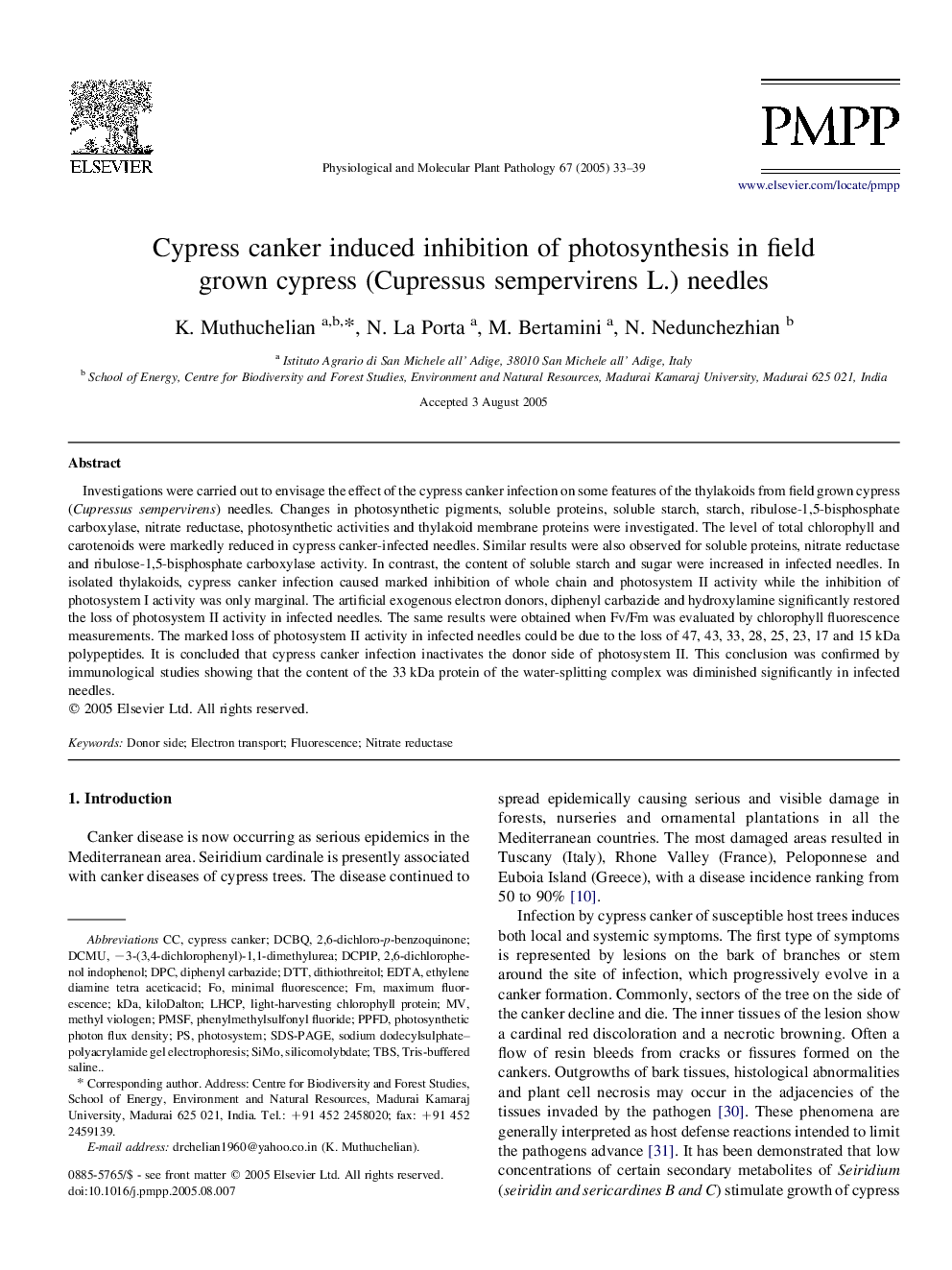| Article ID | Journal | Published Year | Pages | File Type |
|---|---|---|---|---|
| 9144614 | Physiological and Molecular Plant Pathology | 2005 | 7 Pages |
Abstract
Investigations were carried out to envisage the effect of the cypress canker infection on some features of the thylakoids from field grown cypress (Cupressus sempervirens) needles. Changes in photosynthetic pigments, soluble proteins, soluble starch, starch, ribulose-1,5-bisphosphate carboxylase, nitrate reductase, photosynthetic activities and thylakoid membrane proteins were investigated. The level of total chlorophyll and carotenoids were markedly reduced in cypress canker-infected needles. Similar results were also observed for soluble proteins, nitrate reductase and ribulose-1,5-bisphosphate carboxylase activity. In contrast, the content of soluble starch and sugar were increased in infected needles. In isolated thylakoids, cypress canker infection caused marked inhibition of whole chain and photosystem II activity while the inhibition of photosystem I activity was only marginal. The artificial exogenous electron donors, diphenyl carbazide and hydroxylamine significantly restored the loss of photosystem II activity in infected needles. The same results were obtained when Fv/Fm was evaluated by chlorophyll fluorescence measurements. The marked loss of photosystem II activity in infected needles could be due to the loss of 47, 43, 33, 28, 25, 23, 17 and 15Â kDa polypeptides. It is concluded that cypress canker infection inactivates the donor side of photosystem II. This conclusion was confirmed by immunological studies showing that the content of the 33Â kDa protein of the water-splitting complex was diminished significantly in infected needles.
Keywords
Related Topics
Life Sciences
Agricultural and Biological Sciences
Plant Science
Authors
K. Muthuchelian, N. La Porta, M. Bertamini, N. Nedunchezhian,
